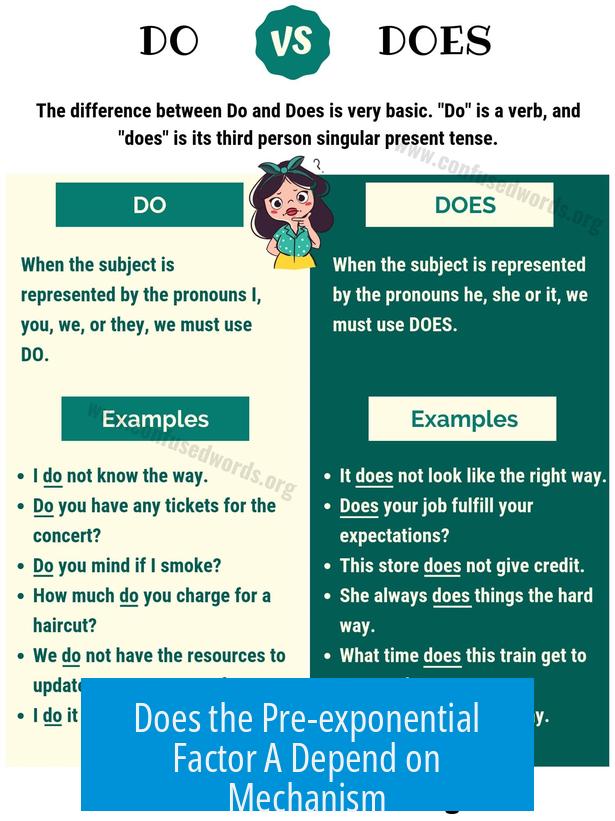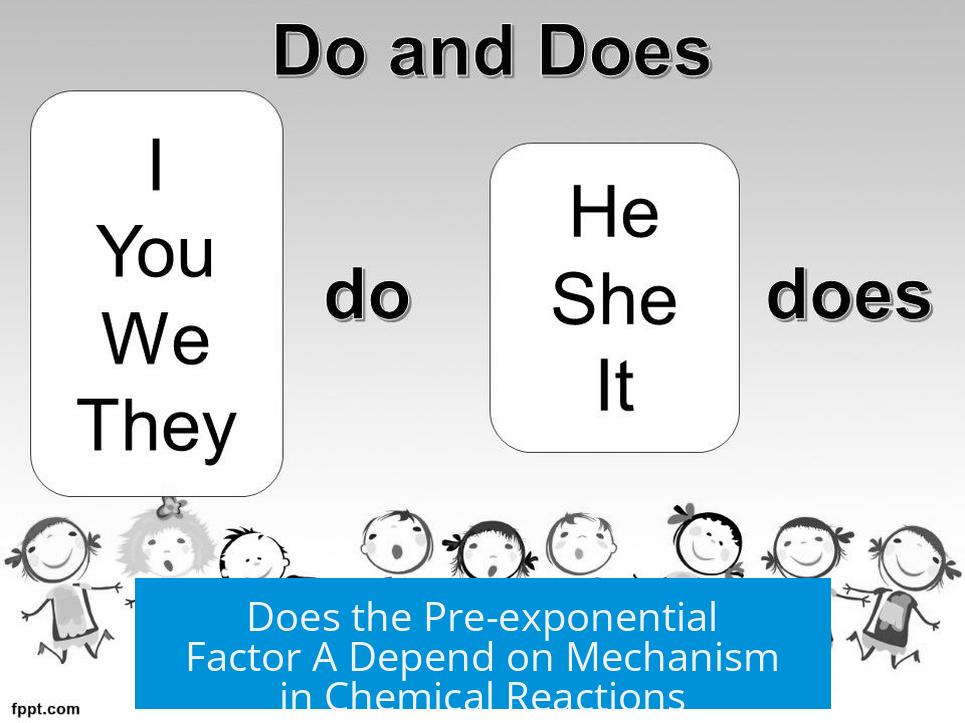Does the Pre-exponential Factor A Depend on Mechanism?

The pre-exponential factor (A) in the Arrhenius equation does depend on the reaction mechanism. Catalysts influence A by changing the transition state and the reaction pathway, effectively modifying the collision frequency and molecular orientation factors that contribute to A. This dependency is confirmed by both theoretical and experimental findings.
Understanding the Pre-exponential Factor and Its Role
The Arrhenius equation models reaction rates as:
k = A * exp(-E_a / RT)
Here, k is the rate constant, E_a is the activation energy, R is the gas constant, T is temperature, and A is the pre-exponential factor. The factor A includes the frequency of molecular collisions and the probability that collisions lead to a reaction, encompassing molecular orientation and steric effects. Changes in reaction mechanism or catalysts alter these components.
Mechanism’s Impact on the Transition State
- A catalyst provides a new pathway by creating an alternative transition state at lower energy.
- This change affects how molecules interact, changing the frequency and effectiveness of collisions.
- As a result, both E_a and A are modified.
For example, catalytic action might split a single-step reaction into multiple steps involving intermediates with different energy barriers and pre-exponential factors in each step. The overall reaction rate then reflects the dominant or rate-determining step.
Mathematical Relations and Equilibrium Constraints
The relationship between forward and reverse rate constants dictates constraints on A and E_a. The equilibrium constant Q is defined by:
Q = k_f / k_r = (A_f * exp(-E_{a,f}/RT)) / (A_r * exp(-E_{a,r}/RT))
Where k_f and k_r are the forward and reverse rate constants respectively, with corresponding pre-exponential factors A_f, A_r and activation energies E_{a,f}, E_{a,r}.
Implications of Equilibrium on Pre-exponential Factors
- The equilibrium constant Q remains unchanged by the mechanism.
- The difference in activation energies equals the reaction enthalpy, which stays constant since products and reactants do not change.
- The ratio of pre-exponential factors must adjust accordingly to compensate for changes in activation energies to keep equilibrium intact.
This is captured by the equation:
ln(Q) = (ln A_f – ln A_r) + (1/RT)(E_{a,r} – E_{a,f})
The ratio A_f / A_r can change, but the difference in their natural logarithms must maintain equilibrium. Therefore, A values are mechanism-dependent but connected through equilibrium requirements.
Energy Landscape and Mechanistic Interpretation
Chemical reactions can be visualized as traversing an energy landscape with mountains (activation barriers) and valleys (intermediates). Catalysts offer an alternative route that involves different barriers and intermediates.
- Without a catalyst, the reactants must surmount a high energy barrier.
- With a catalyst, the system may cross several smaller barriers via steps involving intermediates.
- Each step is characterized by its own A and E_a.
Mathematically, such multi-step mechanisms are modeled as a sequence of elementary reactions, each with specific pre-exponential factors. The observed overall pre-exponential depends on the rate-determining step.
In practice, often the overall reaction is approximated as a single step with an effective activation energy equal to the highest barrier. The effective pre-exponential factor is then experimentally determined, reflecting the combined effect of molecular collisions and orientation in the actual mechanism.
Empirical Observations: The Compensation Effect
Experimental studies in catalysis show that modifications in E_a and A often correlate. This mutual adjustment is known as the “compensation effect.”
- Lowering of activation energy due to catalysis commonly accompanies a decrease in the pre-exponential factor.
- This decrease partly offsets the acceleration from reduced E_a, influencing overall reaction rate.
- The compensation effect is widely documented but lacks a universally accepted mechanistic explanation.
This effect indicates a mechanistic link between barrier height and collision/transition state factors. Interpreting it requires detailed molecular insights that depend on the reaction system.
Summary of Key Points
- Pre-exponential factor A depends on the reaction mechanism, including catalyzed pathways.
- Catalysts modify the transition state and collision parameters, altering A and E_a simultaneously.
- The equilibrium constant constrains the ratio of forward and reverse pre-exponential factors but not their individual values.
- Multi-step mechanisms involve distinct A values for each step; overall A reflects the dominant process.
- Experimental evidence shows the compensation effect where decreases in E_a are often offset by lower A values.
Does the pre-exponential factor A change with different reaction mechanisms?
Yes. The pre-exponential factor A depends on the mechanism because it reflects the collision frequency and orientation. A change in mechanism often alters these factors, thus changing A.
How does a catalyst affect the pre-exponential factor A?
Catalysts lower activation energy and change the reaction path. They modify the transition state and collision probabilities, which changes A. So, A is different for catalyzed and uncatalyzed reactions.
Does the ratio of forward and reverse pre-exponential factors stay constant?
The ratio of pre-exponential factors for forward and reverse reactions must remain constant to keep the equilibrium constant unchanged. However, individual A values can vary with mechanisms or catalysts.
Why does the compensation effect relate to changes in A?
The compensation effect shows that when activation energy decreases, A often decreases too. This partial offset balances the reaction rate changes but does not fully cancel them.
Can multi-step mechanisms be approximated by a single pre-exponential factor?
Yes. Complex reactions with intermediates can be simplified to one effective step with a chosen activation energy and pre-exponential factor for practical use.





Leave a Comment